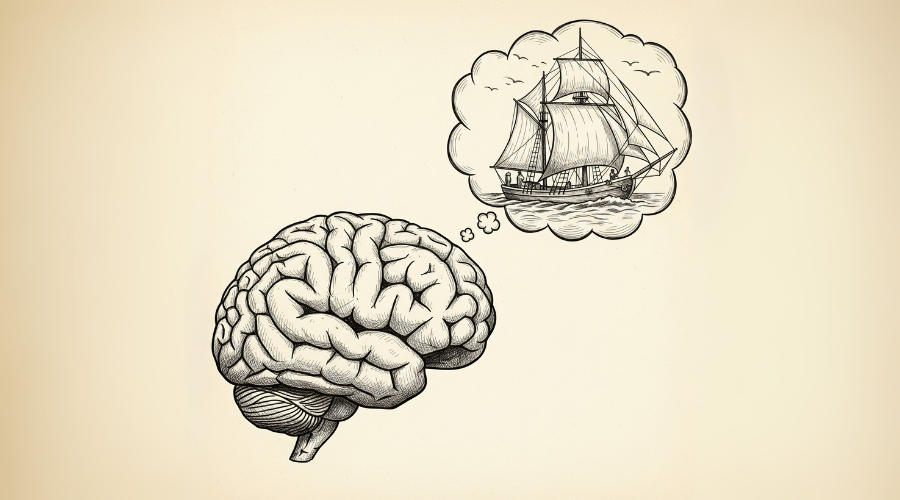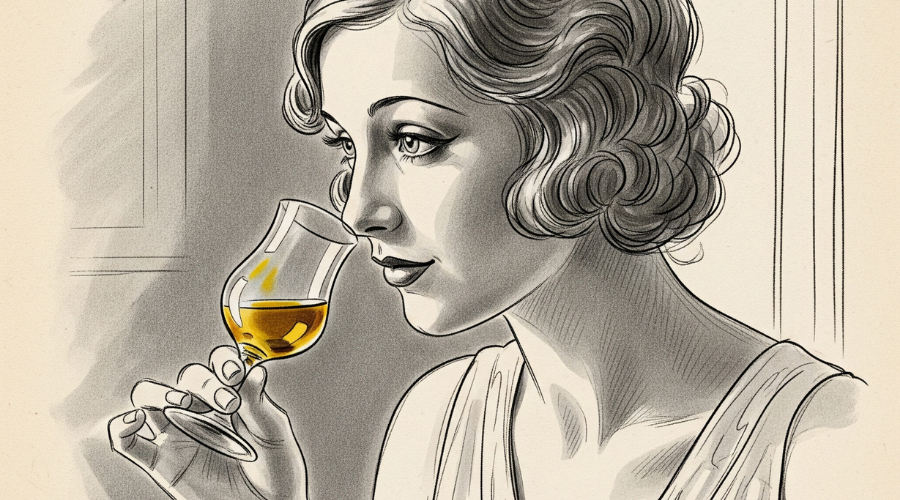Why Do Some Whiskies Taste Salty?
It’s no surprise that some single malt whiskies are decidedly briny, maritime, and unquestionably salty. But lab analysis reveals something odd — there’s no measurable sodium in scotch whisky. So how can whisky taste salty?
This isn’t some kind of whisky witchcraft. It’s neuroscience, chemistry, and perception all conspiring together in a delicious illusion. So join me as we get to the bottom of this longstanding debate, to answer once and for all, how can scotch whisky taste salty?
The Mystery of Salt-Free Saltiness
It’s not uncommon for whisky drinkers, particularly fans of coastal or Islay malts, to report notes of sea salt, brine, or seaweed. This leads many to assume the whisky contains trace minerals or sodium from the air, water, or cask. But extensive studies of scotch whisky have repeatedly failed to detect sodium ions at concentrations high enough to be tasted.
So, if the salt isn’t there, but you still taste it, what’s really going on?
The Science: Saltiness as a Multisensory Illusion
Traditionally, saltiness has been considered a basic taste, detected when sodium ions interact with taste receptors on the tongue. But recent neuroscience has revealed that our perception of flavour isn’t just about taste, it’s a complex integration of taste, smell, mouthfeel, visual cues – and most importantly – neurological processes.
This is where things get interesting. It turns out that odours associated with salty foods can actually enhance our perception of saltiness, even when no sodium is present.
This phenomenon is known as chemosensory interaction — where smell and taste signals influence each other in the brain. A 2013 fMRI study by Seo et al. demonstrated that when participants were presented with a ‘salt-congruent’ odour (like bacon) alongside a low-salt solution, their brains responded as if they had consumed more salt than they actually had.
How Does This Work in the Brain?
When salty-congruent odours are present — think bacon, anchovy, soy sauce, or yes, even a coastal sea breeze — they activate similar brain regions as actual salty tastes. These include the insula, orbitofrontal cortex, and anterior cingulate cortex — all areas known for processing flavour integration.
In fact, the study found that the enhancement effect was strongest in low-salt solutions, meaning odours do some of their best work when salt levels are subtle.
In a more recent 2023 study by Faridi Esfanjani & Mohebbi, researchers used cheddar cheese aroma (another salty-associated odour) and monosodium glutamate (MSG) to enhance the perceived saltiness of a NaCl solution. The combination triggered stronger activity in the rolandic operculum and orbitofrontal cortex, further reinforcing how odour-taste congruency tricks the brain into dialling up saltiness perception.
Why Do Some Whiskies Taste Salty?
In whisky, saltiness isn’t about sodium. It’s about association.
Many coastal and peated whiskies contain aromas that are congruent with salty foods: brine, smoked fish, seaweed, even cured meats. These aromas are formed during fermentation, distillation, and especially during maturation in certain casks — often ex-bourbon barrels, refill hogsheads, or those stored in maritime warehouses.
Phenolic compounds, aldehydes, and sulphur derivatives can all contribute to this ‘briny’ aromatic profile. When these aromas hit the nose, they activate salt-associated neural pathways. Your brain fills in the gap, and voilà — saltiness, with no sodium in sight.
Why This Matters for Sensory Training
Understanding the mechanics behind salty perception is crucial for whisky professionals — blenders, educators, marketers, and competition judges alike. If we continue to assume that perceived saltiness must come from actual salt, we’ll miss a whole dimension of flavour science that’s central to how consumers experience whisky.
At The Sensory Advantage, this is exactly the kind of nuance we explore in our professional training. We help teams develop a deeper understanding of multisensory integration — the way our brains weave together taste, smell, and context to create the illusion of flavour.
Being aware of these interactions can change how you describe, design, and evaluate whisky.
Why Salty Flavours May Be More Common in Peated and Coastal Whiskies
Peated whiskies, especially those from Islay or Campbeltown, often feature aromatic compounds that echo salty foods: seaweed, fish skin, tar, iodine, and bacon fat. These phenolic and sulphurous notes are not just evocative — they’re neurologically congruent with saltiness.
When you nose a glass and detect these smells, your brain reads it as salty-adjacent. Add in a few other context cues — maybe a coastal distillery name, or the image of a crashing wave on the label — and your perception is locked in.
Whiskies matured in coastal warehouses may also absorb subtle atmospheric volatiles that contribute to this effect. Even without significant sodium presence, the airborne compounds mingling with the cask over time may boost the briny illusion.
Practical Applications: What Producers and Tasters Can Learn
Here are five takeaways for those in the whisky industry:
1. Saltiness vs Sodium
Let’s stop assuming that salty perception comes from minerals or sea air alone. The real action is happening in the brain, driven by smell-taste congruency.
2. Descriptive Language Should Acknowledge Illusion
Descriptors like ‘sea salt’ or ‘briny’ are valid and evocative, but they’re metaphorical, not chemical. Being transparent about this enhances both consumer trust and tasting literacy.
3. Context is Everything
Saltiness is more likely to be perceived when the consumer expects it — from the packaging, distillery reputation, or other flavour notes in the dram. Whisky tasting is as much storytelling as it is chemistry.
4. Sensory Training Should Include Odour-Taste Interactions
At The Sensory Advantage, we equip professionals with the tools to recognise, control, and communicate these subtle sensory tricks. From awards panels to blending labs, understanding flavour illusions helps ensure more accurate evaluation — and more compelling whiskies.
Conclusion: The Salty Truth
When a whisky tastes salty, it’s not necessarily due to seawater, sea spray, or sodium. It’s your brain, drawing on decades of flavour associations, recognising the familiar smell of something savoury, and filling in the blanks.
This isn’t deception. It’s brilliance. It’s the way our senses collaborate to make a dram far more than the sum of its chemical parts.
So next time you catch a whiff of brine, anchovy, or salted butter in your glass, remember that it’s most likely an illusion created by your brain. But when we think about it, all flavour is an illusion anyway!
Further Reading and References
Seo, H.-S. et al. (2013). A salty-congruent odor enhances saltiness: Functional magnetic resonance imaging study. Human Brain Mapping, 34:62–76. https://doi.org/10.1002/hbm.21414
Faridi Esfanjani, A., & Mohebbi, M. (2023). Enhancing saltiness perception by chemosensory interaction: an fMRI study. Scientific Reports, 13:11128. https://doi.org/10.1038/s41598-023-38137-2
Djordjevic J, Zatorre RJ, Jones-Gotman M (2004): Odor-induced changes in taste perception. http://dx.doi.org/10.1007/s00221-004-2103-y
Frank RA, Byram J (1988): Taste-smell interactions are tastant and odorant dependent. https://doi.org/10.1093/chemse/13.3.445
Lawrence G, Salles C, Septier C, Busch J, Thomas-Danguin T (2009): Odour-taste interactions: A way to enhance saltiness in low-salt content solutions. https://doi.org/10.1016/j.foodqual.2008.10.004






